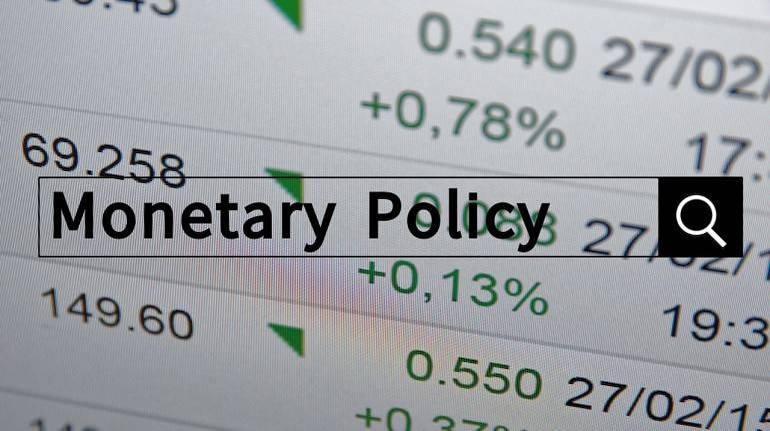http://sharetipsinfo.comJust get registered at Sharetipsinfo and earn positive returns

The MPC has been following a pattern, largely supporting growth (remaining on an accommodative stance), and ignoring near-term inflation spike. Jayanth Varma, one of the MPC members, has been the lone voice questioning this stance

The Monetary Policy Committee (MPC) retained the key rates within the August round of the review and continued with the so-called accommodative stance. An accommodative stance is interpreted as a policy stance that is essentially tilted towards a rate cut or a standing quo.
A rate hike is ruled out during this phase. The MPC has consistently maintained, since the beginning of the COVID-19 pandemic, that growth revival is of utmost priority and inflation spike is transitory. Hence, a majority of members have voted for the continuation of the accommodative stance.
Ever since the MPC came into existence in 2016, the interest rate-setting process has ceased to be a one-man show. Earlier, the Federal Reserve Bank of India (RBI) Governor had the last word on the policy decision. This changed significantly with the MPC formation including external experts.
In some sense, the RBI became only a celebration of the rate-setting panel of six members. The discussions during the policy meets became broader in nature. There has been some eye-opening questions and a few major dissent notes within the MPC over time about the very fundamental nature of the policy stance and forward guidance, etc.
In the August monetary policy review, too, there are important questions being raised by one among the members, Jayanth Varma, which is formed public through the policy minutes released on August 20 that require a better look.
Here are the main points raised by Varma, explained during a simpler language:
One, COVID is here to remain, despite the high level of vaccinations, a minimum of for subsequent 3-5 years because the experience in other countries indicate. and therefore the monetary policy's ability to deal with this pandemic is restricted . “The ability of the monetary policy to mitigate a person's tragedy of this nature is extremely limited as compared to its ability to contain a depression,” Varma said. He asks: how long can the monetary policy remain accommodative?
Two, the pandemic has impacted the economically weaker sections during a bigger way, compared to the affluent segments who have weathered it reasonably well. Here again, the power of the monetary policy to deal with this impact on the worst-affected segments is far less, compared with the economic policy .
Instead, a protracted accommodative stance could stimulate asset price inflation, Varma says. In other words, the MPC member asks if it's worth continuing the straightforward money stance for a extended period when there's no clarity of the character of this crisis and therefore the monetary policy ability is restricted to figure against COVID? What about the resultant high inflation?
Third, the particular inflation target of the MPC is 4 percent. After averaging above 6 percent in 2020-21, inflation is forecast to be above 5 percent in 2021-22, and it's not expected to drop below 5 percent even within the half-moon of 2022-23, consistent with RBI projections. Treating 5 percent because the target would significantly increase the danger of inflation-targeting failures. The question Varma asks here is what should be the particular target of the inflation, compared to the first mandate, considering the risks of high prices on economically weaker sections.
Is MPC concerned about inflation?
Varma points out that the first aim of the MPC should be to take care of macroeconomic stability. By creating the erroneous perception that the MPC is not any longer concerned about inflation and it's focused exclusively on growth, the MPC could also be inadvertently aggravating the danger that inflationary expectations are going to be disanchored, he asks.
Varma argues that easy money today could lead on to high interest rates tomorrow. On the opposite hand, by demonstrating its commitment to the inflation target with tangible action, the MPC are going to be ready to anchor expectations, reduce risk premia, and sustain lower long-term interest rates for extended , thereby aiding the economic recovery. Citing this, Varma voted against the accommodative stance.
What are the key takeaways from these points from Varma's notes? the power of the monetary policy to counter the COVID impact on economically weaker sections is restricted, compared with a stronger fiscal response. Also, as long as COVID may still stay for a longer-than-expected timeframe, there's no clear logic in staying within the easy money stance. Not only may such a stance fail to possess the specified impact, but the shortage of attention to the inflation problem might also be risky within the long run.
Already, there are questions on the MPC’s consistent accommodative stance while simultaneously upping the retail inflation target (5.7 percent now in FY22 Vs 5.1 percent earlier). High prices are hurting the poorer sections most severely. Hence, the RBI can not ignore the inflation problem. during this backdrop, Varma has raised some pertinent questions which require to be deliberated well.
Also Read: Get Share Market Tips with High Accuracy